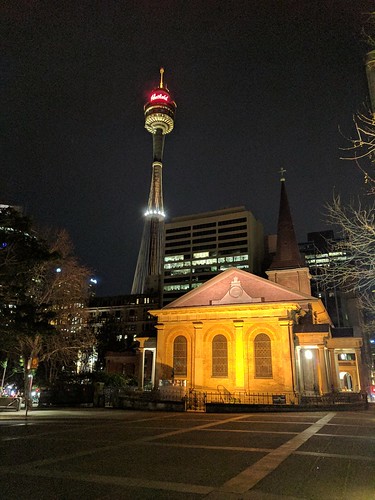Of tumor cells. To this end, we treated A549 and H460 lung cancer cells with different low doses of RV (0?0 mM) to examine if RV treatment has any impact on the colony formation of NSCLC cells. Clonogenic survival assays demonstrated that even as low as 10 mM of RV treatment can significantly suppress the colony-forming activity of A549 and H460 cells (Figs. 1A, 1B and 1C). The data also show that RV-induced suppression of colony formation correlates well with the concentrations of RV, suggesting that RV treatment inhibits the clonogenic growth of NSCLC cells in a dose-dependent manner.A549 and H460 cells (Figs. 3D and 3E). These results suggest that the p53 21 pathway is involved in RV-induced premature senescence in lung cancer cells. Interestingly, our data also show 23977191 that RV treatment significantly down-regulates the expression of EF1A in A549 and H460 cells (Figs. 3D and 3E), suggesting that EF1A may play an important role in regulating RV-induced premature senescence in NSCLC cells.RV treatment causes DNA damage and increases ROS production in lung cancer cellsMany chemotherapeutic agents and radiation kill tumor cells through the induction of DNA damage. Phosphorylated H2AX (cH2AX) is a robust MedChemExpress 56-59-7 marker of DNA DSBs [36]. To determine if DNA damage contributes to RV-induced anticancer effects, we performed cH2AX foci assays to examine if RV treatment causes DNA DSBs in lung cancer cells. As shown in Figure 4, our data demonstrate that RV treatment results in a significant increase in the formation of cH2AX foci in both A549 and H460 cells (Figs. 4A, 4B and 4C). As the formation of cH2AX foci is an important surrogate of DNA DSBs [36], these results demonstrate for the first time that the anticancer effect of RV is attributable at least in part to RV-induced DNA damage in NSCLC cells. We and others have demonstrated that ROS play a critical role in mediating genotoxic stress-induced DNA damage [37,38]. Therefore, we hypothesized that RV may cause DNA DSBs via increased ROS production in NSCLC cells. To test this hypothesis, we investigated if RV treatment has any impact on ROS production in  lung cancer cells. DCF-DA staining and flow cytometric assays showed that the levels of ROS were markedly increased in RV-treated A549 and H460 cells compared with that of control cells (Figs. 4D and 4E). These results suggest that RV may induce lung cancer cell premature senescence via ROSmediated DNA damage.Low dose RV inhibits lung cancer cell growth via an apoptosis-independent mechanismAlthough it has been shown that higher doses (100?00 mM) of RV treatment may induce apoptosis in tumor cells [28?1], it was unknown if low dose RV suppresses the growth of lung cancer cells through the induction of apoptosis. Because activated caspase-3 and cleaved PARP are well-documented MedChemExpress ML-281 measurements of apoptosis [33,34], we investigated if low dose RV treatment has any impact on the expression of activated caspase-3 and cleaved PARP in A549 and H460 cells. As shown in Figure 2, Western blotting data revealed that low dose RV treatment did not cause any significant changes in the expression of cleaved PARP and activated caspase-3 in either A549 or H460 cells. In contrast, camptothecin (CPT) treatment resulted in a pronounced increase in cleaved PARP and activated caspase-3 expression in both A549 and H460 cells (Figs. 2A and 2B). These results strongly suggest that low dose RV inhibits lung cancer cell growth via an apoptosisindependent mechanism.NAC attenuate.Of tumor cells. To this end, we treated A549 and H460 lung cancer cells with different low doses of RV (0?0 mM) to examine if RV treatment has any impact on the colony formation of NSCLC cells. Clonogenic survival assays demonstrated that even as low as 10 mM of RV treatment can significantly suppress the colony-forming activity of A549 and H460 cells (Figs. 1A, 1B and 1C). The data also show that RV-induced suppression of colony formation correlates well with the concentrations of RV, suggesting that RV treatment inhibits the clonogenic growth of NSCLC cells in a dose-dependent manner.A549 and H460 cells (Figs. 3D and 3E). These results suggest that the p53 21 pathway is involved in RV-induced premature senescence in lung cancer cells. Interestingly, our data also show 23977191 that RV treatment significantly down-regulates the expression of EF1A in A549 and H460 cells (Figs. 3D and 3E), suggesting that EF1A may play an important role in regulating RV-induced premature senescence in NSCLC cells.RV treatment causes DNA damage and increases ROS production in lung cancer cellsMany chemotherapeutic agents and radiation kill tumor cells through the induction of DNA damage. Phosphorylated H2AX (cH2AX) is a robust marker of DNA DSBs [36]. To determine if DNA damage contributes to RV-induced anticancer effects, we performed cH2AX foci assays to examine if RV treatment causes DNA DSBs in lung cancer cells. As shown in Figure 4, our data demonstrate that RV treatment results in a significant increase in the formation of cH2AX foci in both A549 and H460 cells (Figs. 4A, 4B and 4C). As the formation of cH2AX foci is an important surrogate of DNA DSBs [36], these results demonstrate for the first time that the anticancer effect of RV is attributable at least in part to RV-induced DNA damage in NSCLC cells. We and others have demonstrated that ROS play a critical role in mediating genotoxic stress-induced DNA damage [37,38]. Therefore, we hypothesized that RV may cause DNA DSBs via increased ROS production in NSCLC cells. To test this hypothesis, we investigated if RV treatment has any impact on ROS production in lung cancer cells. DCF-DA staining and flow cytometric assays showed that the levels of ROS were markedly increased in RV-treated A549 and H460 cells compared with that of control cells (Figs. 4D and 4E). These results suggest that RV may induce lung cancer cell premature senescence via ROSmediated DNA damage.Low dose RV inhibits lung cancer cell growth via an apoptosis-independent
lung cancer cells. DCF-DA staining and flow cytometric assays showed that the levels of ROS were markedly increased in RV-treated A549 and H460 cells compared with that of control cells (Figs. 4D and 4E). These results suggest that RV may induce lung cancer cell premature senescence via ROSmediated DNA damage.Low dose RV inhibits lung cancer cell growth via an apoptosis-independent mechanismAlthough it has been shown that higher doses (100?00 mM) of RV treatment may induce apoptosis in tumor cells [28?1], it was unknown if low dose RV suppresses the growth of lung cancer cells through the induction of apoptosis. Because activated caspase-3 and cleaved PARP are well-documented MedChemExpress ML-281 measurements of apoptosis [33,34], we investigated if low dose RV treatment has any impact on the expression of activated caspase-3 and cleaved PARP in A549 and H460 cells. As shown in Figure 2, Western blotting data revealed that low dose RV treatment did not cause any significant changes in the expression of cleaved PARP and activated caspase-3 in either A549 or H460 cells. In contrast, camptothecin (CPT) treatment resulted in a pronounced increase in cleaved PARP and activated caspase-3 expression in both A549 and H460 cells (Figs. 2A and 2B). These results strongly suggest that low dose RV inhibits lung cancer cell growth via an apoptosisindependent mechanism.NAC attenuate.Of tumor cells. To this end, we treated A549 and H460 lung cancer cells with different low doses of RV (0?0 mM) to examine if RV treatment has any impact on the colony formation of NSCLC cells. Clonogenic survival assays demonstrated that even as low as 10 mM of RV treatment can significantly suppress the colony-forming activity of A549 and H460 cells (Figs. 1A, 1B and 1C). The data also show that RV-induced suppression of colony formation correlates well with the concentrations of RV, suggesting that RV treatment inhibits the clonogenic growth of NSCLC cells in a dose-dependent manner.A549 and H460 cells (Figs. 3D and 3E). These results suggest that the p53 21 pathway is involved in RV-induced premature senescence in lung cancer cells. Interestingly, our data also show 23977191 that RV treatment significantly down-regulates the expression of EF1A in A549 and H460 cells (Figs. 3D and 3E), suggesting that EF1A may play an important role in regulating RV-induced premature senescence in NSCLC cells.RV treatment causes DNA damage and increases ROS production in lung cancer cellsMany chemotherapeutic agents and radiation kill tumor cells through the induction of DNA damage. Phosphorylated H2AX (cH2AX) is a robust marker of DNA DSBs [36]. To determine if DNA damage contributes to RV-induced anticancer effects, we performed cH2AX foci assays to examine if RV treatment causes DNA DSBs in lung cancer cells. As shown in Figure 4, our data demonstrate that RV treatment results in a significant increase in the formation of cH2AX foci in both A549 and H460 cells (Figs. 4A, 4B and 4C). As the formation of cH2AX foci is an important surrogate of DNA DSBs [36], these results demonstrate for the first time that the anticancer effect of RV is attributable at least in part to RV-induced DNA damage in NSCLC cells. We and others have demonstrated that ROS play a critical role in mediating genotoxic stress-induced DNA damage [37,38]. Therefore, we hypothesized that RV may cause DNA DSBs via increased ROS production in NSCLC cells. To test this hypothesis, we investigated if RV treatment has any impact on ROS production in lung cancer cells. DCF-DA staining and flow cytometric assays showed that the levels of ROS were markedly increased in RV-treated A549 and H460 cells compared with that of control cells (Figs. 4D and 4E). These results suggest that RV may induce lung cancer cell premature senescence via ROSmediated DNA damage.Low dose RV inhibits lung cancer cell growth via an apoptosis-independent  mechanismAlthough it has been shown that higher doses (100?00 mM) of RV treatment may induce apoptosis in tumor cells [28?1], it was unknown if low dose RV suppresses the growth of lung cancer cells through the induction of apoptosis. Because activated caspase-3 and cleaved PARP are well-documented measurements of apoptosis [33,34], we investigated if low dose RV treatment has any impact on the expression of activated caspase-3 and cleaved PARP in A549 and H460 cells. As shown in Figure 2, Western blotting data revealed that low dose RV treatment did not cause any significant changes in the expression of cleaved PARP and activated caspase-3 in either A549 or H460 cells. In contrast, camptothecin (CPT) treatment resulted in a pronounced increase in cleaved PARP and activated caspase-3 expression in both A549 and H460 cells (Figs. 2A and 2B). These results strongly suggest that low dose RV inhibits lung cancer cell growth via an apoptosisindependent mechanism.NAC attenuate.
mechanismAlthough it has been shown that higher doses (100?00 mM) of RV treatment may induce apoptosis in tumor cells [28?1], it was unknown if low dose RV suppresses the growth of lung cancer cells through the induction of apoptosis. Because activated caspase-3 and cleaved PARP are well-documented measurements of apoptosis [33,34], we investigated if low dose RV treatment has any impact on the expression of activated caspase-3 and cleaved PARP in A549 and H460 cells. As shown in Figure 2, Western blotting data revealed that low dose RV treatment did not cause any significant changes in the expression of cleaved PARP and activated caspase-3 in either A549 or H460 cells. In contrast, camptothecin (CPT) treatment resulted in a pronounced increase in cleaved PARP and activated caspase-3 expression in both A549 and H460 cells (Figs. 2A and 2B). These results strongly suggest that low dose RV inhibits lung cancer cell growth via an apoptosisindependent mechanism.NAC attenuate.
